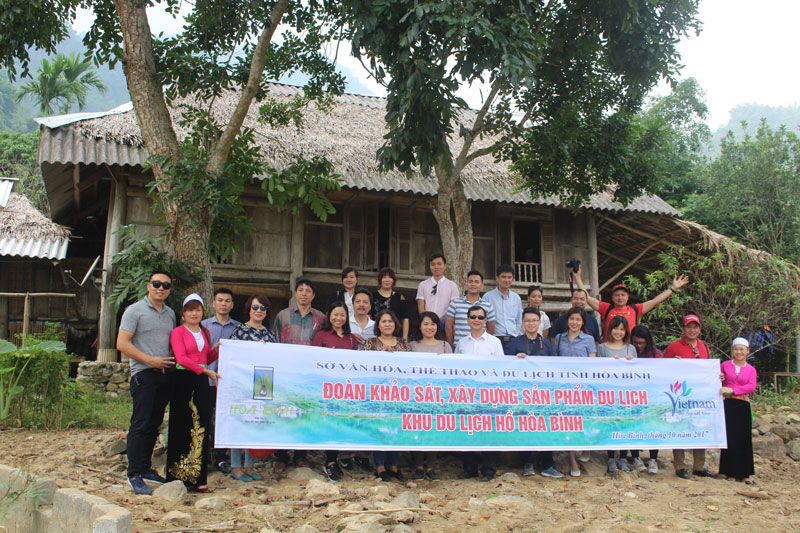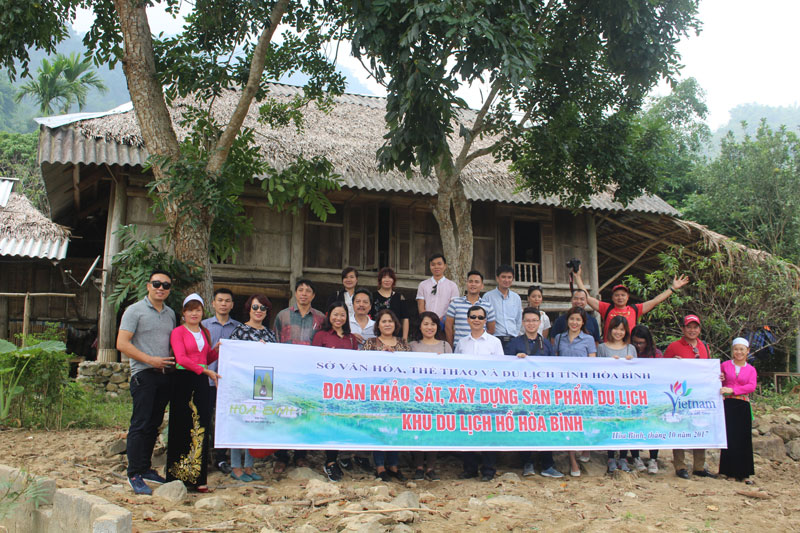



The famtrip
delegation explores tourist site in Ke hamlet, Hien Luong commune (Da Bac
district).
The delegation learned about the situation in tourist destinations, including community-based tourist hamlets, caves, springs and tourist spots in the districts of Da Bac, Mai Chau, Tan Lac and Cao Phong, and Hoa Binh city. Of those destinations, some have been under effective operation such as Ban Tru hamlet of Thai Thinh commune (Hoa Binh city); Ke hamlet of Hien Luong commune and Da Bia hamlet of Tien Phong commune (Da Bac district); Ngoi hamlet of Ngoi Hoa commune (Tan Lac district); Suoi Lon hamlet of Tan Mai commune (Mai Chau district); and waterfalls and islands in Hoa Binh Lake like the lake on the mountain, twin waterfalls in Trach spring, coconut and windmill islands.
Tour operators lauded the huge
tourism potential of Hoa Binh Lake, with clear water, natural and beautiful mountains
which make picturesque landscapes, along with local people’s friendliness. Some
destinations boast professional service providers, delicious and clean food.
Although Hoa Binh Lake is wide,
vehicles travelling on the lake are limited in capacity and quality while
scattered tourism spots have yet to form routes and create long journeys to
lure visitors.
At present, food around the lake
mainly includes fish, hill chicken, local pigs and wide bamboo shoots and
vegetables, among others. They are all clean and tasty products, however,
cooking process and food arrangement remain unattractive. Additionally, there
has been no specific cuisine planning for each region, so products are still
overlapped. Some other products like brocade, rattan and bamboo products and
handicrafts have yet to be put up for sale systematically.
At the end of the trip, tour
operators affirmed that as Hoa Binh Lake boasts huge tourism potential, they
will introduce and devise new travel programmes that bring more guests to
explore the culture of local ethnic people here as well as contemplate the
pristine and spectacular beauty of the lake./.